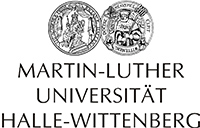Novel test method detects coronavirus in highly diluted gargle samples

The most prominent test method being used to detect whether someone suffers from an acute COVID-19 infection is the polymerase chain reaction, or briefly, PCR. The PCR technique is highly specific as it detects the viral genome.
Alternative tests detect antibodies against the disease. As antibodies are generated in the body during the course of the infection, they can only be used to detect a past infection or an advanced stage of the disease.
Antibody tests are often non-specific and sometimes unable to distinguish between the different corona viruses that can affect humans. Testing labs worldwide are therefore reaching the limits of their capabilities.
Professor Andrea Sinz, a mass spectrometry expert at the Institute of Pharmacy at MLU, had the idea of developing a new mass spectrometry-based test to complement PCR. Mass spectrometry allows molecules to be precisely identified based on their mass and charge.
Sinz and her colleagues developed a method to look for components of SARS-CoV-2 viruses. “We directly measure the proteins of the virus, not the genetic material,” Sinz explains.
For the experiments, University Medicine Halle provided gargle solutions of three COVID-19 patients. Sinz’s research group developed a method to detect virus components in these highly diluted samples. “Although we received only a small amount of gargle solution, we were able to detect components of viral proteins,” says Dr Christian Ihling, who carried out the tests.
“This was quite surprising, and I hadn’t expected it to work myself,” Sinz adds. The test is highly specific for the virus since the corresponding proteins are only present in SARS-CoV-2. In addition, the test can be used in the early stages of the disease when many viruses are present in the mouth and throat.
According to Sinz, the test currently takes about 15 minutes. The research group is now trying to further reduce the analysis time using artificially produced virus components. Sinz is also looking for further collaborations, including companies. “Together with a company from Hesse, we are planning to use another mass spectrometric method that would enable us to perform measurements within seconds”.
This method would then be comparable to so-called “biotyping”, which is an established method used by hospitals to diagnose bacterial or fungal infections. However, it remains to be seen whether this approach will also be suitable for detecting SARS-CoV-2. Sample preparation would no longer be time-consuming and the measurements could also be carried out by non-specialized personnel.
The novel diagnostic method relying on mass spectrometry will however not be available immediately. Sinz hopes that it will be up and ready in a few months. “I am in close contact with colleagues worldwide, some of whom have had a far worse experience of the pandemic than we have.” She is also a founding member of the “COVID-19 Mass Spectrometry Coalition”, a research association that relies on mass spectrometry for a better understanding of the disease.
Professor Andrea Sinz
Institute of Pharmacy, Department of Pharmaceutical Chemistry and Bioanalytics
phone: + 49 345 55-25170 / -171
email: andrea.sinz@pharmazie.uni-halle.de
Ihling, Christian et al. Mass Spectrometric Identification of SARS-CoV-2 Proteins from Gargle Solution Samples of COVID-19 Patients. Journal of Proteome Research (2020). https://doi.org/10.1021/acs.jproteome.0c00280
Media Contact
More Information:
http://www.uni-halle.deAll latest news from the category: Life Sciences and Chemistry
Articles and reports from the Life Sciences and chemistry area deal with applied and basic research into modern biology, chemistry and human medicine.
Valuable information can be found on a range of life sciences fields including bacteriology, biochemistry, bionics, bioinformatics, biophysics, biotechnology, genetics, geobotany, human biology, marine biology, microbiology, molecular biology, cellular biology, zoology, bioinorganic chemistry, microchemistry and environmental chemistry.
Newest articles

High-energy-density aqueous battery based on halogen multi-electron transfer
Traditional non-aqueous lithium-ion batteries have a high energy density, but their safety is compromised due to the flammable organic electrolytes they utilize. Aqueous batteries use water as the solvent for…

First-ever combined heart pump and pig kidney transplant
…gives new hope to patient with terminal illness. Surgeons at NYU Langone Health performed the first-ever combined mechanical heart pump and gene-edited pig kidney transplant surgery in a 54-year-old woman…

Biophysics: Testing how well biomarkers work
LMU researchers have developed a method to determine how reliably target proteins can be labeled using super-resolution fluorescence microscopy. Modern microscopy techniques make it possible to examine the inner workings…





















